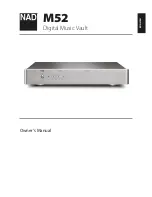
75
The IOP, measured with the Goldmann tonometer (2 p.m.), was 22 and 24 mmHg in OD and OS,
respectively. Interestingly, the averages of two ocular response analyser measurements of Goldmann-
correlated IOP, corneal compensated IOP and hysteresis were 20.4, 17.8 and 13.2 mmHg in OD and
25.1, 20.5 and 14.1 mmHg in OS.
Computerized visual field tests showed both optic nerves to be within normal limits
(Figure 90)
.
Pascal Dynamic Contour Tonometer IOP measurements were 18.4 and 19.6 mmHg in OD and OS,
respectively.
This is a case of normal thick corneas of correspondingly high stiffness, leading to ocular
hypertension. There is no indication for topical medications to decrease the IOP.
Figure 90: HRT single report with images of the optic nerve in OD and OS
It is shown
(Figure 89)
that moving peripherally from the 4 mm zone the thickness progression graph
does not run parallel to the normative data. The progression index is 0.9 for OD and 1.1 for OS. When
screening for ectasia we would consider 1.2 as the borderline. Here the profile curves should be
analyzed in combination with the progression indices and Scheimpflug images for a more accurate
clinical decision.
11 Corneal Thickness
Содержание Pentacam
Страница 45: ...43 Figure 51 General Overview display showing a low ACV shallow ACD and narrow angle in OS 9 Glaucoma...
Страница 75: ...73 Figure 86 Show 2 Exams Pachymetric showing a case of Fuchs dystrophy 11 Corneal Thickness...
Страница 214: ...212 The following pages remain free and offer space for personal notes...
















































